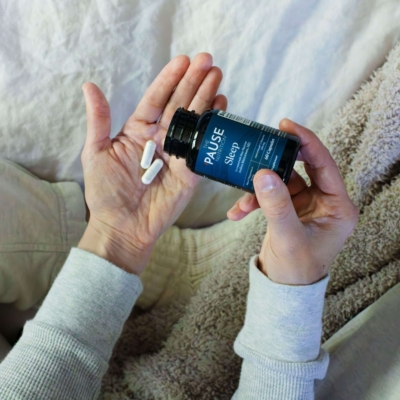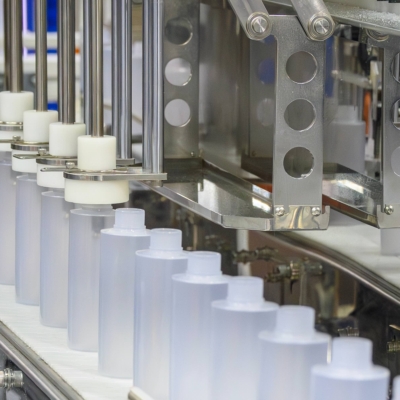
What Will The Sustainable Beauty Store Of The Future Be Like?
In this edition of Beauty Independent’s ongoing series posing questions relevant to indie beauty, we asked 11 retail and sustainability specialists, beauty industry experts and brand founders: What will the sustainable beauty store of the future be like?
- Carley Klekas Founder, CleanB Consulting
In my consulting work, the big vision for the sustainable beauty store of the future is inclusive, inviting, and an oasis of sustainable options for all shoppers. It has a plethora of refill and reuse solutions, and the in-store recycling programs of the past are obsolete because we’ve made all packaging components refillable, recyclable (curbside) or compostable.
Refill and reuse options are queen in this future, and clients only shop for what they truly need and adds value to their life. Formulas are innovative, chemicals of concern are out, waterless products with high-value packaging that is curbside recyclable is in.
Sampling has found its sustainability path and doesn’t contribute to landfill or environmental waste. The experience is digital, and clients can easily experience products through tech tools and AI. The store is powered by 100% renewable energy. There are no shopping bags, beauty lovers adore bringing their own.
Consumers can easily see and understand how to shop by their values through official and widely recognized program seals, for example Sephora’s Clean + Planet Positive program, which champions sustainability driven brands that are leading the U.S. on ingredient safety, sourcing, packaging, climate, giving and more.
Furthermore, the environmental impact of every product is fully transparent to the shopper in a way that is easy to understand through consumer-facing scoring systems. In this future vision, last but not least, it’s fun, a playland of beautiful harmony between artistry, sustainability and exploration where you can discover more of who you are, how to live in synergy with the planet resources, and everyone feels invited to play.
- Lea d'Auriol Founder, Oceanic Global
A vision for a sustainable beauty store in the future is one where every aspect has been designed with sustainability and regeneration in mind, from the store itself to the products designed and packaged to reduce waste, promote a circular economy and made with environmentally friendly materials to the formulas themselves being organic and ethically sourced.
Beauty retail is one of the most wasteful industries as right now most products are created as single use instead of incorporating user friendly refill stations. [It uses] large amounts of plastic packaging.
Key opportunities include:
- For brands to move away from creating plastic-free products and packaging and to be verified by Oceanic Global’s Blue Product and Packaging Seal. Blue’s Product and Packaging seals verify responsibly sourced plastic-free products and/or packaging, recognize their sustainability achievements and help consumers shop for products that tread lightly on the planet.
- Redesigning or eliminating sample-size beauty products: Sample-sized beauty products are designed to be single use, adding billions of single-use items to the waste stream and normally end up in landfills, rivers, the ocean.
The issue with small, sample-sized beauty products is:
- The customer needs to make sure that there are no cream or material residues inside the packaging to increase chances of the products being recycled. All residue needs to be properly disposed of in the trash, not down the drain as that contaminates our water sources. Once the product is empty, then it can go into the recycling bin.
- There is a chance that, even if you put your products for recycling, they may not be recycled as the products may be too small. Recycling sorting machines are built for standard sized products, like water bottles, so the machines may not recognize miniature products.
- As a general rule, as the size of products matter in recycling. Products under two inches like bottle caps, pumps, droppers, etc., are not widely recyclable. For this reason, when throwing away beauty products, it is important to separate the parts that can be recycled like a bottle from the spray top. Other items like pouches and squeezable tubes like hand creams and sheet mask packets are not recyclable and should be disposed of in the trash.
- The only exception with caps is if they are made from the same material as the rest of the packaging, then they can be recycled as one product. Read the product's packaging or brand’s website to see if this is the case.
- Behavioral change around accepting these single-use sampling products [is] needed, and we need to be challenging brands to design their packaging to make [it] truly more sustainable. For example, challenging brands to think about refillable minis.
Credo Beauty is a great example of [a retailer] that discontinued samples for environmental reasons when they launched their #StopSingleUse campaign. Mia Davis, Credo’s director of environmental and social responsibility, is an advisor to Oceanic Global’s Blue Standard industry program.
- Lorraine Dallmeier Owner and CEO, Formula Botanica
The sustainable beauty store of the future will be all about reuse and minimal waste. The beauty brands of tomorrow will provide their formulations in refillable packaging, which can either be returned to the store for collection, returned to the brand itself or refilled.
Packaging choices may need to become slightly more standardized in order to accommodate sanitizing procedures for refills. I also expect to see retailers sell more solid, multi-purpose formulations that require less packaging.
If we’re talking about brick-and-mortar beauty stores, then we could potentially also see the rise of in-store areas where people can personalize their cosmetics. The emergence of at-home lipstick printers and DIY bases that consumers can use for themselves is inspiring many people to create their own cosmetics.
It’s possible that this type of cosmetic personalization/formulation could form part of the beauty store of the future, as brick-and-mortar retailers will aim to create more experiences for their customers and become a destination for shoppers.
- Jhánneu Roberts Sustainability Content Creator and Count on Clean Crew Member, Dial
A sustainable beauty store of the future would require you to refill all of your beauty products instead of buying an item in new packaging each time. There are many zero-waste stores that already provide items such as body lotion and shampoo in bulk where you can bring your own containers, but would love to see this option for cosmetics as well.
Re Grocery in Los Angeles primarily focuses on selling bulk foods, but they also have a selection of beauty products that can be refiled. They also have a closed-loop partnership with Youth To The People and would love for other beauty brands to hop on board!
Not everyone has access to zero-waste stores but there are still good options out there if you want to reduce waste. Dial for example recently launched their Concentrated Refills Foaming Hand Wash that comes with packets that you recycle through TerraCycle. They are an affordable hand wash option and can be easily picked up at your local Target.
- Ellen Friedman EVP, RPG
The sustainable beauty store of the future will be a collaboration of the brand/retailer, the designer and the manufacturer. Sustainable design in the future will encompass all areas and processes including, energy, raw materials, sourcing and logistics.
I believe that it is based on evaluating the entire life cycle of both the product and the fixtures, as one cannot exist sustainably without the other. The approach is based on reusability, recyclability, updateability and longevity.
Beauty is often about newness, so we need to create retail and merchandising that flexes and can accommodate changes in the planogram and graphics often and easily. We love the idea of evergreen fixtures with parts and pieces that have the ability to transform with different products, messaging, promotions and categories.
The industry is already working hard at reducing plastics, but each retailer has to evaluate how they are putting in place programs that can actually responsibly dispose, reuse, refill or repurpose materials and packaging.
The beauty industry is making huge strides in reducing plastic, creating refillable packaging, establishing bulk fill dispensers and joining in the movement of recycling packaging, but we can always do more.
- Helen Yang Founder and CEO, Clean Filter Packaging
Expanded options for end-of-life product disposal are critical. We're starting to see some stores tackle this with refillables or in-store recycling stations.
The next step in sustainable retail will be pushing for zero waste. Zero packaging should end up in the landfill, which means retailers and brands need to actively choose recyclable and biodegradable packaging clearly marked with disposal instructions.
This effort can be augmented by in-store composting, returning and refilling for consumers who don't have curbside access or are unsure about how to sort their empties.
- Christopher Skinner Founder and Principal, School House and School House Studios
Given the current economic, political, environmental and social climate, beauty retail must now go beyond current short-term strategies based on physical safety. It’s time for us to start engineering positive pathways for consumers by offering them a vision embedded with hope and advocacy for change.
Environmentally, our spaces needed to be agile and adaptable, reduce the ongoing need for additional collateral to overhaul the look and feel, utilize local materials and craftsmanship, and embrace existing architecture versus removing and replacing. Socially, a space needs to provide moments of action and justice built around its local community.
- Jazmin Alvarez Founder and Chief Curator, Pretty Well Beauty
One thing I think retailers can and should do is limit or refuse returns. This may not be a popular opinion, but the cost as well as the waste that occurs when customers return a product only negatively contributes to any sustainability efforts being made. I think this will in turn encourage more conscious consumerism and reduce product and packaging waste.
- Freddie Sheridan Director, Sheridan&Co
When it comes to creating sustainable stores, the first thing that comes to mind is the materials that we select to bring the space to life. This has been on brands’ radars for a while now, but whether or not they actually go ahead with more eco-friendly materials often come downs to the difference in cost between them and traditional alternatives.
As a retail design agency, our responsibility is to ensure we are constantly updating our material libraries as well as encouraging brands to follow through with their intentions and become early adopters of innovative sustainable materials. Only through these actions will we see then becoming more widely available and viable for a greater number of companies.
Sheridan&Co [is] proud to have worked with brand X on a retail strategy that holds impact at its core and sets a new standard in creating sustainable stores. The partnership has outlined best in class standards in wide range of critical areas, including the following:
Circular Design
All plastic, glass, metal and paper-based substrates in the store have been made from the recycled packaging of products made by the brand itself. Not only have we use this as an opportunity to make a memorable visual statement, but this action alone has put them in direct control of their own waste consumption.
Low Impact
Though the brand has a consistent presence internationally, we have intentionally built-in flexibility to allow materials to be sourced locally. We label these materials in store to ensure customers who share the same values can clearly understand how sustainability has impact our combined decisions.
Constant Progress
Any elements in the store that are updated on a regular basissuch as promotional material or product specific merchandising are fueled by constant innovation. Historically, we have updated our merchandising guidelines periodically, but we are now using every promotional event as an opportunity to test the latest renewable materials to sure that progress is continuous.
Open Sourced
Any trials that we consider to be successful are published publicly so other brands can take advantage of our learnings and progress.
Impact Positive
Using a combination of updatable digital elements and materials that have potential in terms of new life, extended life, energy creation or reuse in nature, we ensure that all window campaigns like the store itself have a better rating than impact zero.
Energy Efficient
We have worked with specialists to ensure that the energy strategy for each of the brand’s stores is tailored to the climate in each specific location. Levels of light, sound, temperature and pollution are all investigated carefully and directly inform decisions linked to efficiency.
Air Quality
We use every opportunity to have a positive influence on both internal and external air quality. Working with closely local councils, we push boundaries when it comes to incorporating high oxygen producing plants and moss species as well as training staff to keep them in the best possible condition.
- Alisha Gallagher Co-Founder, MOB Beauty
There is so much opportunity in our industry to decrease our footprint, and it’s great to see retailers taking action such as Credo’s elimination of single-use samples and instituting sustainable packaging guidelines.
In the future, refill stations will become the norm, merchandising units are made with more sustainable materials, and recycling programs for packaging end of life are integrated into the store experience.
- Marine Ravera Marketing Director, Arcade Beauty
Now more than ever, it's crucial for companies to break away from the traditional and invest in new methods, which means packaging overall and storefronts are going to look very different. We predict that refillable solutions and reusable packaging will become more prominent and should be incentivized for manufacturers all the way down to beauty customers.
For example, Arcade Beauty has recently introduced a 3D Spouted Pouch. The pouch reduces the amount of rigid plastic when compared to a traditional bottle or tube and introduces mono-materials, which are recycle-ready. It is a newly popular type of packaging formulation and design.
It's important to take risks and try new designs as the future of our planet is at stake. More sustainable packaging and products need to become more accessible and experiential so they can quickly become our new normal. For example, a retailer could make refilling your pouch a fun experience for a customer perhaps at a refill bar in a brick-and-mortar location.
If you have a question you’d like Beauty Independent to ask beauty entrepreneurs, executives and experts, please send it to editor@beautyindependent.com.






Leave a Reply
You must be logged in to post a comment.